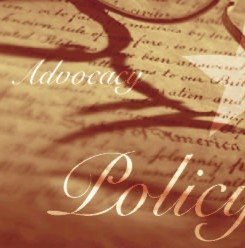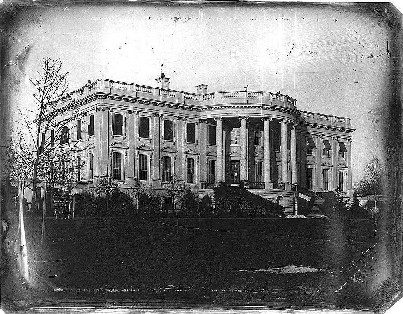main: May 2011 Archives
 Think good ideas for an engine, but little gas in the tank.
Think good ideas for an engine, but little gas in the tank.The vast majority of arts and arts education funders don't fund advocacy and remain leery of it. Side-by-side with the discomfort remains a lack of understanding of what is allowed by law and what is not. The fact of the matter is that the law allows for just about everything, except partisan politics. You cannot campaign for a candidate. Otherwise, you can lobby, print materials, train, communicate, organize, pursue judicial solutions, and more. And, while there are legal limits to some of this work, particularly lobbying, that limit has a fair amount of head room.
The trepidation here is certainly not limited to the funders. Endemic to the non-profit arts sector is a fear of advocacy. It's okay with most boards as long as it's a soft email campaign or soft public service campaign, maybe.
I guess the skepticism is understandable, after all, since much of what makes for the stuff of fundraising is about making nice to people. Tough advocacy, the sort we see relatively little of, usually involves some sort of tension. The act of speaking out raises conflict, as a matter of course, and that has been difficult to incorporate into the identity most organizations have developed appropriate to the need to raise substantial amounts of money.
That being said, I do believe that if funders were to put more money out there for advocacy, that more would be done, a lot more.
So, it was with great interest, and a bit of sadness that I read this piece in The New York Times: Behind Grass Roots School Advocacy, Bill Gates.
This past year, I watched in amazement as a brand spanking new advocacy organization emerged in New York City: Educators 4 Excellence. Here, a small group of young New York City school teachers create an advocacy organization around "education reform" issues such as seniority and "choice," and the next thing you know, they have a campaign on local TV and are accorded a sort of elite status among many of the local education reporters.
It was one of those head scratching moments. How do a few relatively young teachers come from out of nowhere and then launch a very expensive TV campaign promoting their vision of "school reform"?
Well, the answer, in essence, is in the the Times piece. Funding, and plenty of it. And Educators 4 Excellence is just the tip of the iceberg.
The foundation spent $373 million on education in 2009, the latest year for which its tax returns are available, and devoted $78 million to advocacy -- quadruple the amount spent on advocacy in 2005. Over the next five or six years, Mr. Golston said, the foundation expects to pour $3.5 billion more into education, up to 15 percent of it on advocacy.
Unfortunately, arts education does not appear to be on the Gates Foundation, nor many of the other big-league school reform funder agendas. So, it is up to the many smaller foundations and individuals that support arts education
While arts and arts education funders debate whether or not they want to take any money away from direct service funding, and whether or not they are comfortable with funding advocacy, Gates will flood advocacy organizations they like with $3.5 billion of the next five years. And guess what else, much of what the flood of money will bring will do little to nothing about whether or not kids get the arts. In fact, I predict it will have a negative effect on the arts, as more and more of the public debate will be about charters, unions, and value-added measurements, throwing in a turnaround school here and there.
Many in arts education still think that program equals policy. In other words, there is still a lot of confusion between the definition of practice and that of policy.
In The Center for Arts Education's 2006 strategic plan, advocacy was pushed to the forefront. After 130 whole school partnership, $40 million in direct funding of schools, helping to establish a $75 million a year categorical funding line in the local school district budget that returned over 1,000 arts teachers to the schools, and more, the organization recognized that programs is not policy and programs do not make policy.
I will say it again: programs do not equal policy.
I know that we need more support to do advocacy the right way, and I know that we are not alone.
I hope that the funding community is reading the article mentioned above, and while they do not have the resources of Gates, that they will recognize the fundamental nature of advocacy. It is not peripheral. It is not secondary to direct service. It is something which this field has been attempting to undertake for a number of years while being woefully under-capitalized.
The time is now.
And, here are two interesting resources, from the Atlantic Philanthropies, which urge foundations to become engaged in supporting advocacy and what some of that support could target:
Confronting Systemic Inequities in Education
Advocacy Capacity Training Assessment: An Overview of the Field
The mural occupies the walls and steel doors along two floors of a middle school in Brooklyn. If turned into pavement, it would extend more than two city blocks.It's a terrific story about a terrific school that I know well. IS259 in Brooklyn was a long-term partner school of The Center for Arts Education.
If you want to see a bit about the mural after reading the Times piece, I've included a nice video about the project.
And, if you want to learn even more about the school and itss approach to sustaining arts education, they are a feature of CAE's online look at promising practices, called Arts Powered Learning.
Click here to here to access Arts Powered Learning: School Leadership Module 1, featuring IS 259.

Jane Remer's CliffNotes:
Recently to my chagrin and discomfort, many scholars and practitioners in favor of improving public education through democratic means refer to current events and efforts in harsh terms. What we used to call "positive school change, development or improvement" has been cast aside as "soft and wimpy" and replaced with a lexicon that uses "reform" in its dictionary definitions as a punishment, laced with accusations of malpractice, misconduct, and even abuse. Perhaps without even realizing it, since 1983 those who want to rescue and/or demolish our current school systems and practice have fallen into the battle metaphor of what I call the language of defeat.
The almost fatal attack on the adequacy of American education in 1983, set off by "A Nation at Risk: The Imperative for Educational Reform" (August 1983, National Commission on Excellence in Education) and the ensuing sweeping addiction to the word "reform" as both noun and verb, has brought us to a new place in the history of American public education. These days self-appointed people of wealth and power who know little about schools, schooling and the public school system now rejoice in the blame game, piling assaults on schools, administrators, teachers, parents, the poor and other more or less defenseless targets as the cause for every conceivable problem we face. Typically, they irrationally expect the schools to protect, care for, teach and discipline the young and hold them responsible and accountable for failure for graduation, test scores, college readiness, health, safety, citizenship, and social graces that in calmer and more reasonable times, we knew and acknowledged were impossible expectations of schools.
As you read through the following description of the turning point of American education beginning in 1983, you will notice the war-like metaphors and language. If you're curious, research the panel of experts and the report, itself, to better understand where we are today and what we have to overcome.
In 1983 American education reform entered a new era. It was in that year that the federal government published a report of the National Commission on Excellence in Education entitled A Nation at Risk: The Imperative for Educational Reform. Commissioned in August 1981 by President Ronald Reagan's secretary of education, Terrel H. Bell, and chaired by David P. Gardner, then president of the University of Utah, this eighteen-member blue-ribbon panel of educators and elected officials examined the quality of elementary and secondary public education in the United States and found a "rising tide of mediocrity" that threatened the nation's future. In inflammatory tones, the commissioners reported that the United States had engaged in unthinking, unilateral educational disarmament, asserting that if an unfriendly foreign power had attempted to impose on America the mediocre educational performance the commissioners found, the nation might well have viewed it as an "act of war."
(Read more: Education Reform - OVERVIEW, REPORTS OF HISTORICAL SIGNIFICANCE - School, Schools, Educational, National, Public, and Commission http://education.stateuniversity.com/pages/1944/Education-Reform.html#ixzz1LyNY65SV)
Ignoring the dictum of unintended consequences, the authors of the report took the wrong fork in the road. They could have chosen more optimistic language and tried to build on the good things (and there were many) that in the last two centuries we had managed to breed such as, for only one example, universal education. But instead the authors were tone-deaf and pitched to the wrong fork. They chose a definition of reform, as a violent, negative, punitive and destructive term that leaves little or no room for community, collaboration, hands joined, heads put together to try to improve things, including arts education for every child, not just the lucky few.
The twenty-eight year period from 1983 to 2011 has given us a witch's brew of reform mania. While the negative and destructive forces aligned these days are fierce, it is not too late for us to rally, put our state and local heads together and identify those schools, communities, districts and systems that are taking more positive and democratic steps to make useful change. If we study the work of those "pockets of excellence" that are building infrastructures, offering support and professional development, positive thinking and teamwork throughout the process, we may be able to start to rescue ourselves from the trap we are in. I am also providing an article I wrote for Arts Education Policy Review last June that may provide a framework for your endeavors. Its titled "From Lessons Learned to Local Action: Building Your Own Policies for Effective Arts Education."
Here are a few warm-up questions to start our state, city and local group first meetings. If you don't like them, please substitute your own.
1. Why is it that in times of economic, social and political stress, our presidents, leaders, captains of industry and all those with money and power pounce on the weakest strands of our society blaming the schools and their failure to cure all the problems we encounter? Is it motivated by fear, shame, convenience, greed...or the knowledge that the schools and the people in them can't or don't have the weapons to fight back?
2. Why have we landed like wasps on the word "reform" that sting with the language of deficits and failures, rather than "positive change" or "improvement"? Aren't we usually the land of "can do" Americans who meet a challenge like this with good old American Paul Bunyan know-how?
3. Why has the White House and the Presidency seemed to become a bully pulpit for the business model of schooling, supporting or lending credence to the corporate invaders with their billions funding dubious experiments, many of which have been tried and then failed, before?
4. Do schools, districts, systems actually manage to change and sustain their structure and content, and how long do these changes last, with what effect on teaching and learning as well as policy and the economy? I challenge you to see how many research articles and historical references you can find that bellow the praise of reform versus those that have bloomed and then quickly shrunk away unable to avoid the sandpit of implementation, capacity building and scaling up?
5. If every student in every school in the country had a 4.0 grade point average, today, how would that affect unemployment, our wars in the mid-east, the inequity of wealth and distribution in the country, better lives and support for the poor and the aging, the Wall Street moguls who remain unscathed by the economic collapse a few years ago, and on and on? Are GPA's and test scores the definition of our educational excellence?
6. And finally, if every booster of the arts as education created the perfect advocacy campaign and sustained it over a year or so, would the arts have gained a foothold in every school, for every child in all our cities and towns? How do we create a clear statement that distills and demonstrates the importance of the arts for every child in both the process and the product of school change and development?
Let's acknowledge that change is hard to achieve and harder to sustain, especially in our schools that still work tethered to the industrial model. Then let's see if we can figure out a truly democratic way, incrementally, to change and sustain some basic strategies and practice, one school, district, city, town, and state at a time.
Jane Remer, May 12, 2011
***************************************************************************************************************
JANE REMER'S CLIFFNOTES
We are at another rocky precipice in our history that threatens the survival of the arts in our social fabric and our school systems. The timing and magnitude of the challenges have prompted me to speak out about some of the most persistent issues in the arts education field during the last forty-plus years. My credo is simple: The arts are a moral imperative. They are fundamental to the cognitive, affective, physical, and intellectual development of all our children and youth. They belong on a par with the 3 R's, science, and social studies in all of our elementary and secondary schools. These schools will grow to treasure good quality instruction that develops curious, informed, resilient young citizens to participate fully in a democratic society that is in constant flux. I have chosen the title Cliff Notes for this forum. It serves as metaphor and double entendre: first, as short takes on long-standing and complicated issues, and second, as a verbal image of the perpetually perilous state of the arts as an essential part of general public education. I plan to focus on possible solutions and hope to stimulate thoughtful dialogue on-line or locally.
*************************************************************************************************************** Jane Remer has worked nationally for over forty years as an author, educator, researcher, foundation director and consultant. She was an Associate Director of the John D. Rockefeller 3rd Fund's Arts in Education Program and has taught at Teachers College, Columbia University and New York University. Ms. Remer works directly in and with the public schools and cultural organizations, spending significant time on curriculum, instruction and collaborative action research with administrators, teachers , students and artists. She directs the Capezio/Ballet Makers Dance Foundation, and her publications include Changing Schools Through the Arts and Beyond Enrichment: Building Arts Partnerships with Schools and Your Community. She is currently writing Beyond Survival: Reflections On The Challenge to the Arts As General Education. A graduate of Oberlin College, she attended Yale Law School and earned a masters in education from Yale Graduate School.
Jane Remer has worked nationally for over forty years as an author, educator, researcher, foundation director and consultant. She was an Associate Director of the John D. Rockefeller 3rd Fund's Arts in Education Program and has taught at Teachers College, Columbia University and New York University. Ms. Remer works directly in and with the public schools and cultural organizations, spending significant time on curriculum, instruction and collaborative action research with administrators, teachers , students and artists. She directs the Capezio/Ballet Makers Dance Foundation, and her publications include Changing Schools Through the Arts and Beyond Enrichment: Building Arts Partnerships with Schools and Your Community. She is currently writing Beyond Survival: Reflections On The Challenge to the Arts As General Education. A graduate of Oberlin College, she attended Yale Law School and earned a masters in education from Yale Graduate School.
The Center for Arts Education, where I work, has had a toolkit for the past five or so years that was created by the parents, teachers, school leadership, and cultural partners, of PS 203 Queens, together with CAE as part of the program Parents as Arts Partners.
Involving Parents and Schools in Arts Education is a 44 page toolkit, with a whole host of tools that any parent will find useful as they look for help in advancing arts education in their child's school.
You have to admit, there's something to be said about a guide that emerges directly from the work of parents, educators, and partners, rather than from staff (not that there's anything wrong with that, as they say in Seinfeld.)
Here's a chapter list, followed by the embedded toolkit, easily viewed or downloaded to a computer near you...
Foreword i
Introduction ii
Where to Begin 1
Assembling a Team • Gathering Pertinent Information • Developing a School Arts Survey: Check Out Existing Information • Essential Questions
Understanding Parents 2
Survey Needs and Assets • Linguistics and Cultural Tapestry: Identifying Multicultural Elements • Perspectives
Educating Parents 3-4
Why Arts Education Is Important: What Parents Need to Know • How to Reach Parents • Perspectives
Motivating Parents 5
Who Motivates Parents? • What Are the Benefits to Parents? • When and Where to Share Benefits • Perspectives
Empowering Parents 6
Developing Training Opportunities • Defining Action Roles • Offering Rewards • Using a Parent Bulletin Board • Perspectives
Creating a Family Arts Day 7-11
Using an Event as a Springboard • Preparing for an Event • Announcing and Publicizing Your Event • Final Preparation • Day of the Event (For Event Planners and Volunteers) • End of the Event: Thank You and Good Night • Reflection/Evaluation
Parent Advocates 12
Creating a Bandwagon
Building Bridges 13
Cultivating Ongoing Relationships • Parents and Administration • Parents and Teachers • Parents and Artists
Glossary 14
Appendices 15
...we seek leadership that understands fully that subjects like the arts are overwhelmed by an accountability system build on test scores in reading and math, and that in order to buoy the arts, tools such as categorical funding are a necessity.
Here's a guest editorial that I did for Education Update, a really terrific local education news journal in New York City.
Sometimes, it feels good to speak plainly. This was one of them.
Click here for a link to the full edition.
Or you can simply grab my editorial, which ran side-by-side with one by Joseph Polisi:
Kessler Education Update Editorial
I love that title, and can only wish their words to Arne Duncan, all the chief state school officers, all the school superintendents, and all the school principal's ears...
I am a big fan of Rachel Goslin, who runs the President's Committee. I am eager to spend some time with this and I hope that you will too!
The PCAH's goal is to support a climate in American schools where all students are engaged, where they come to school and to class eager to learn, where they speak and write and solve problems with self-confidence and discipline, and where their innate gifts of creativity and innovation are nurtured and encouraged. We would like to see classrooms where teachers develop new ways of working with students and collaborating with their colleagues to motivate the best performance from their classes. We want to create schools where every student feels he or she is good at something and where all teachers feel they have the tools they need to reach their students. As we have seen in our travels across the country, schools like these generate productive students, strong teachers, and in engaged community. PCAH stands ready to partner with public agencies and the private sector to further develop and implement the recommendations above and to increase access for all students to these types of high quality educational experiences.

PCAH Reinvesting 4web
In 2011, there are those who are suspect of the teaching artist field. Some who still see teaching artists as an easy way for schools to outsource arts education, bypassing professional arts educators and the costs associated with certified arts teachers.
And, as in any field of endeavor, there are those who complain about the training, professionalism, quality, etc. Like all things, there is good and there is bad, and the spectrum of everything in between.
If one were to think of arts education as a table, then the teaching artist has surely become one of those legs. Although, it is often difficult to discern it from looking at the now outmoded state arts standards or from what one still hears at a fair number of conversations about K-12 arts education.
 Look, I would challenge anyone to find an independent organization that has fought harder for certified arts teachers than The Center for Arts Education. And, as executive director, I have led the charge.
Look, I would challenge anyone to find an independent organization that has fought harder for certified arts teachers than The Center for Arts Education. And, as executive director, I have led the charge.That being said, while I understand the importance of certified arts teachers, it is often difficult to listen to those who state, as a matter of gospel, that the arts must be taught be certified teachers. And that teaching artists must be complementary to certified arts teachers.
However, there are school districts and/or individual schools, which simply do not hire any certified arts teachers and/or enough of them. It's true, some of these schools use teaching artists instead of certified arts teachers. And guess what? The districts allow it. What is more, there are schools that bring in teaching artists to provide after school arts instruction, work with non-arts teachers, and more. And, if that isn't enough for you, there are schools that bringing in parent volunteers to teach the arts.
Recently, a very senior state school official said to me: "the schools just won't hire arts teachers." Was it hyperbole? Sure, it was a broad generalization that as a statement of fact is wrong. But what this official was talking about was both the present in too many schools, and the future, again in too many schools, and about what would happen as state education budgets decline precipitously next year.
I take this official's point at face value, (which by the way, was made in response to our advocating for more certified arts teachers) and certainly in urban school districts across America, where the exception proves the rule, there aren't enough certified arts teachers to justify arts standards that are built exclusively on a foundation of certified arts teachers.While I understand both the aspirational and political context of standards, I have come to the point in my career where I would rather deal with what is, than what isn't. And not having an adequate number of certified arts teachers is as the great Mark Knopfler sings, what it is now.
Today, the majority of the state arts standards do not reflect the role and place of the teaching artist. They don't reflect what is. As some states will move to revise these standards, it might just be a good time to ask how teaching artists will be situated in these standards. Moreover, as Charlie Parker wrote, Now is the Time for teaching artists to have a place at the table that will write those standards. Will the standards reflect the increasing reality in many schools or will the standards define the role of the teaching artist as being complementary. Will the standards even recognize the teaching artist?
I admit, its a bit tricky, since you want the standards to drive the optimal, and I would certainly be in favor, as I have advocated publicly, for the adequate staffing of highly qualified certified arts teachers supported and complemented by high quality teaching artists. But at the same time, the standards have to reflect the dynamic reality in the trenches and find a way to push equity, quality, and a teaching of the arts that is based upon a bigger and broader arts ecology than we have ever seen before.
In an arts education environment where arts organizations non-profit and commercial, in school, after school, at the venue, and via technology are more involved in schools than ever before in schools, the primary means for most of this activity is the teaching artist. And it's a field that is rapidly growing, in numbers, skill, and knowledge. On one hand it is the brass ensemble doing a lecture demonstration. On the other hand, it is the teaching artist who has gone on to acquire advanced degrees in education, providing in depth instruction, professional development, and more.
And, whatever anyone may say about the quality of these teaching artists, they may very well be no different than the certified arts teacher in the range of quality from good to bad to great.
They are here to stay, I believe, and it would do us all good to recognize them as a fully built leg of an unfortunately unsteady table.
Dewey21C: My Best Work as a Teaching Artist, An Arts Education Reflection
Dewey21C: A Teaching Artist Circa 1982
Dewey21C: The History of Teaching Artistry, by Eric Booth
Dewey21C: Guest Blogger, Jon Deak, Creating Music with El Sistema, Eleven Part Series
